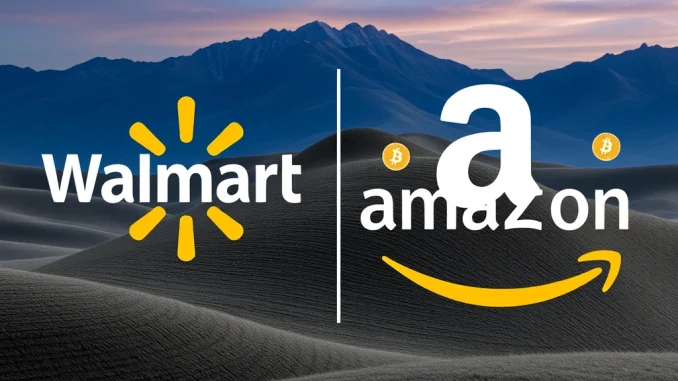
Big news is buzzing in the crypto world! If you’re following the intersection of retail and digital assets, you might have heard the recent reports suggesting that two of the world’s largest companies, Walmart and Amazon, are potentially exploring the launch of their own stablecoins. This isn’t just another rumor; reports citing sources like Walter Bloomberg on X (formerly Twitter), referencing the Wall Street Journal, indicate serious consideration from these e-commerce and retail giants. What could a Walmart stablecoin or an Amazon stablecoin mean for the future of payments, e-commerce, and the broader cryptocurrency landscape?
Why a Corporate Stablecoin Makes Sense
For massive corporations like Walmart and Amazon, entering the stablecoin space isn’t just about riding a trend; it could offer tangible benefits:
- Reduced Transaction Costs: Traditional payment processors charge fees. An internal Corporate stablecoin could significantly cut these costs, especially for high-volume transactions.
- Faster Settlements: Blockchain transactions can settle much faster than traditional banking methods, improving cash flow.
- Enhanced Customer Loyalty Programs: Stablecoins could be integrated into loyalty rewards, offering customers digital assets redeemable within their ecosystems.
- Global Reach & Accessibility: A stablecoin could simplify cross-border payments and make digital payments accessible to unbanked or underbanked populations.
- Integration into Existing Ecosystems: Imagine using a Walmart coin for groceries or an Amazon coin for online shopping – seamless integration into their vast networks.
The Potential Impact of a Retail Stablecoin
The potential introduction of a Retail stablecoin by players of this magnitude could be transformative. It would bring cryptocurrency into the mainstream for hundreds of millions of consumers globally. While stablecoins are designed to maintain a stable value (usually pegged to a fiat currency like the USD), their use by these companies could:
- Increase public familiarity and trust in digital currencies.
- Spur innovation in payment systems across the retail sector.
- Create massive new closed-loop payment networks.
This development, if it materializes, represents a significant step in the institutional adoption of blockchain technology, extending its reach far beyond traditional finance and into everyday consumer transactions.
Challenges on the Path to a Stablecoin Launch
Despite the potential benefits, launching a stablecoin is complex, even for giants like Walmart and Amazon. They would face significant hurdles:
- Regulatory Compliance: Stablecoins are under intense scrutiny globally. Navigating diverse and evolving regulations would be a major challenge.
- Technical Implementation: Building and maintaining a secure, scalable blockchain infrastructure is no small feat.
- Consumer Adoption: While their customer bases are huge, convincing users to adopt a new digital currency requires trust and education.
- Competition: They would compete not only with traditional payment methods but also with existing stablecoins and other tech companies potentially exploring similar ventures.
Any Stablecoin launch would require navigating these complexities carefully to ensure success and widespread acceptance.
Looking Ahead: What Does This Mean?
While these are still reports and explorations, the fact that companies like Walmart and Amazon are seriously considering stablecoins signals a potential shift in how retail and e-commerce could handle payments in the future. It underscores the growing relevance of blockchain and digital currencies in mainstream business strategy. Keep an eye on this space – the next big move in retail payments might just involve a stablecoin.



